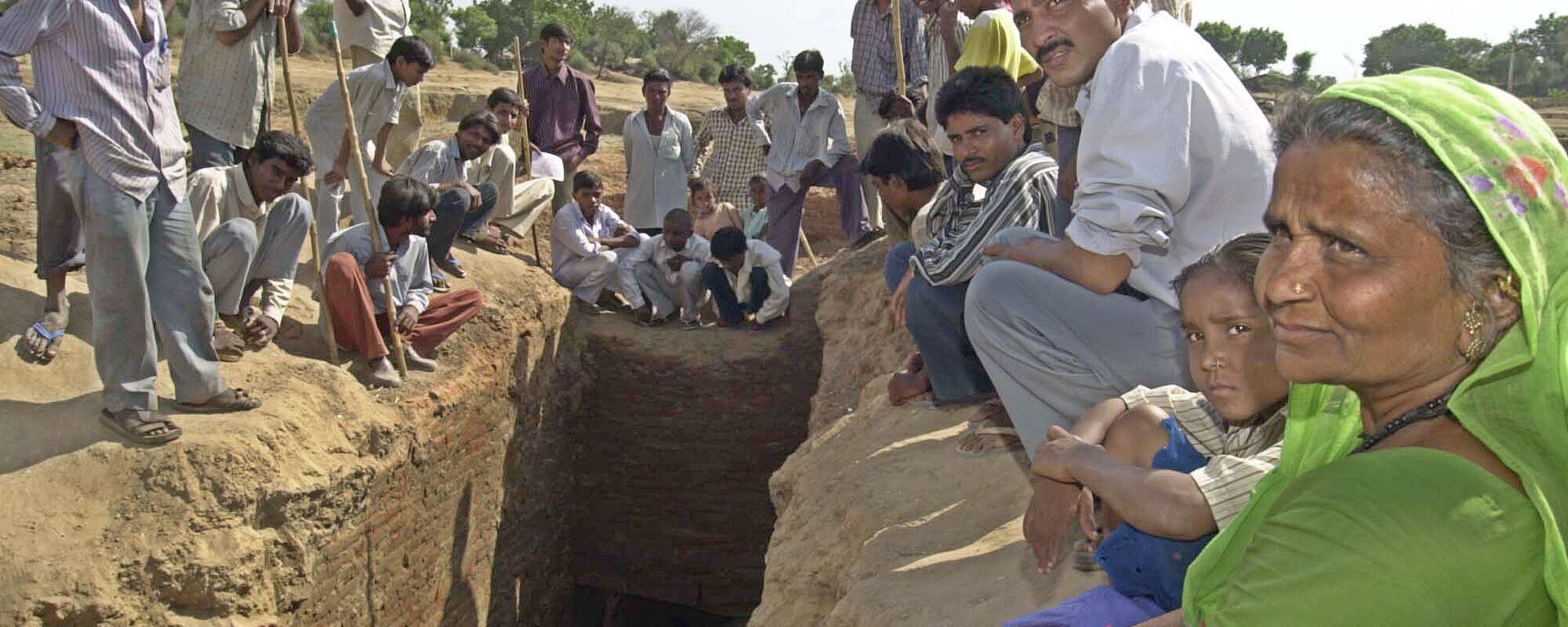https://sputniknews.in/20231025/2000-year-old-stone-carvings-of-faces-discovered-in-dried-up-amazon-river-5064466.html
2,000-Year-Old Stone Carvings of Faces Discovered in Dried-Up Amazon River
2,000-Year-Old Stone Carvings of Faces Discovered in Dried-Up Amazon River
Sputnik India
While rock carvings were seen in the past, the current year's severe drought conditions have led to the discovery of a wide variety of sculptures that will assist researchers in identifying their origins.
2023-10-25T18:10+0530
2023-10-25T18:10+0530
2023-10-25T18:10+0530
amazon
art
history
europe
water scarcity
https://cdn1.img.sputniknews.in/img/07e7/0a/19/5064852_0:28:462:288_1920x0_80_0_0_5fb78cb74cf0827e6869e7af2b734eba.png
This year's severe drought has uncovered a multitude of sculptures, adding to other rock carvings found in the past. These extraordinary findings will greatly aid researchers in identifying their origins.Archaeologist Jaime de Santana Oliveira, who works for the National Institute of Historical and Artistic Heritage (IPHAN), said in an interview that this time we found not only more carvings, but also the sculpture of a human face carved into the rock.At the archaeological site known as Ponto das Lajes (Place of Slabs), fascinating rock carvings portraying animals and other natural elements have been discovered along the shores of the Rio Negro.Oliveira estimates that the engravings are prehistoric, or precolonial, between 1,000 and 2,000 years old.This year the drought has become so severe that the Rio Negro has dropped 15 metres since July, exposing vast expanses of rock and sand where there used to be no beaches.Experts believe that the presence of smooth grooves in the rock indicates that the indigenous people used the area to sharpen their arrows and spears centuries before the arrival of Europeans.
https://sputniknews.in/20231011/ancient-relics-found-during-excavation-at-historic-barabati-fort-in-odisha-4745540.html
europe
Sputnik India
feedback.hindi@sputniknews.com
+74956456601
MIA „Rossiya Segodnya“
2023
Sangeeta Yadav
https://cdn1.img.sputniknews.in/img/07e6/0c/0f/110602_0:0:641:640_100x100_80_0_0_c298016a79eb02ef8caa9d1f688c12a5.jpg
Sangeeta Yadav
https://cdn1.img.sputniknews.in/img/07e6/0c/0f/110602_0:0:641:640_100x100_80_0_0_c298016a79eb02ef8caa9d1f688c12a5.jpg
News
en_IN
Sputnik India
feedback.hindi@sputniknews.com
+74956456601
MIA „Rossiya Segodnya“
Sputnik India
feedback.hindi@sputniknews.com
+74956456601
MIA „Rossiya Segodnya“
Sangeeta Yadav
https://cdn1.img.sputniknews.in/img/07e6/0c/0f/110602_0:0:641:640_100x100_80_0_0_c298016a79eb02ef8caa9d1f688c12a5.jpg
rock carvings, drought conditions, sculptures, brazilian region, amazon river, ancient human faces and other figures, archaeologist jaime de santana oliveira, national historic and artistic heritage institute (iphan), sculpture of a human face, archaeological site, ponto das lajes (place of slabs), rio negro.oliveira, prehistoric, precolonial, rio negro, indigenous inhabitants, europeans,
rock carvings, drought conditions, sculptures, brazilian region, amazon river, ancient human faces and other figures, archaeologist jaime de santana oliveira, national historic and artistic heritage institute (iphan), sculpture of a human face, archaeological site, ponto das lajes (place of slabs), rio negro.oliveira, prehistoric, precolonial, rio negro, indigenous inhabitants, europeans,
2,000-Year-Old Stone Carvings of Faces Discovered in Dried-Up Amazon River
The historic drought in the Brazilian region has caused water levels in the Amazon River to reach record lows, revealing ancient human faces and other figures meticulously carved into the stone.
This year's severe drought has uncovered a multitude of sculptures, adding to other rock carvings found in the past. These extraordinary findings will greatly aid researchers in identifying their origins.
Archaeologist Jaime de Santana Oliveira, who works for the National Institute of Historical and Artistic Heritage (IPHAN), said in an interview that this time we found not only more carvings, but also the sculpture of a human face carved into the rock.
At the
archaeological site known as Ponto das Lajes (Place of Slabs), fascinating
rock carvings portraying animals and other natural elements have been discovered along the shores of the
Rio Negro.Oliveira estimates that the engravings are prehistoric, or precolonial, between 1,000 and 2,000 years old.
This year the drought has become so severe that the Rio Negro has dropped 15 metres since July, exposing vast expanses of rock and sand where there used to be no beaches.
Experts believe that the presence of smooth grooves in the rock indicates that the indigenous people used the area to sharpen their arrows and spears centuries before the arrival of Europeans.



